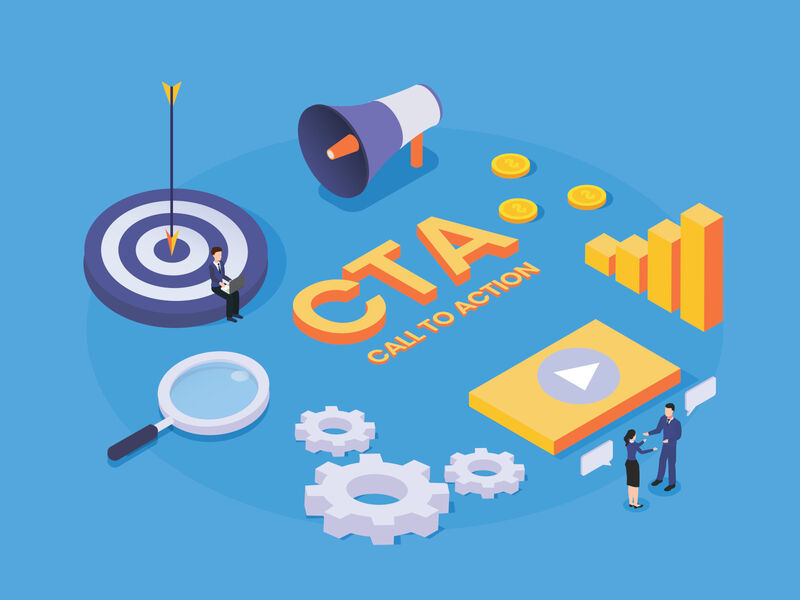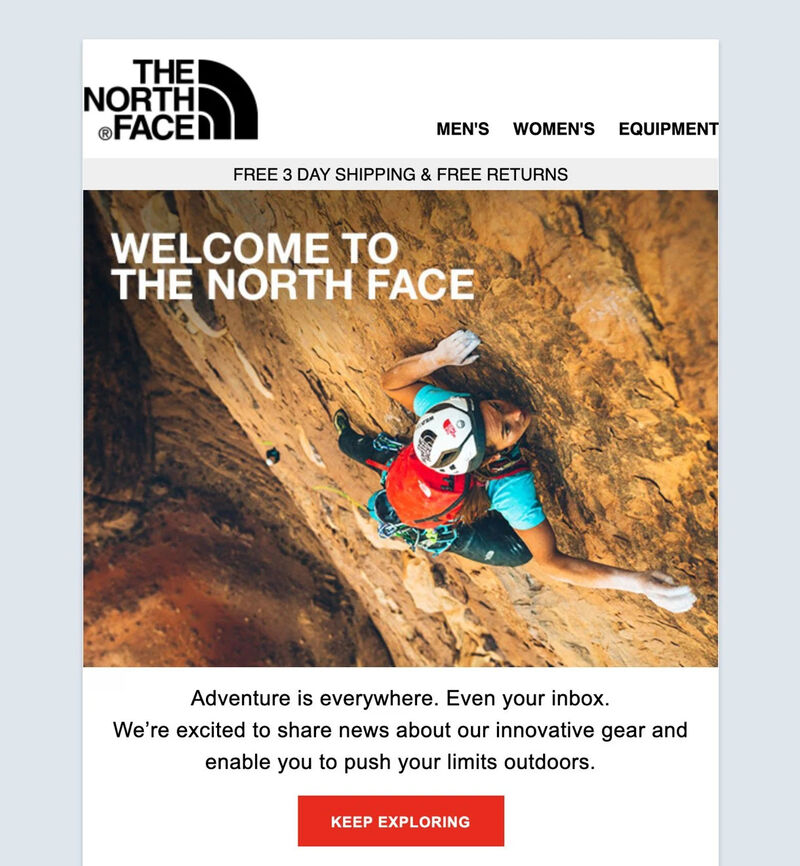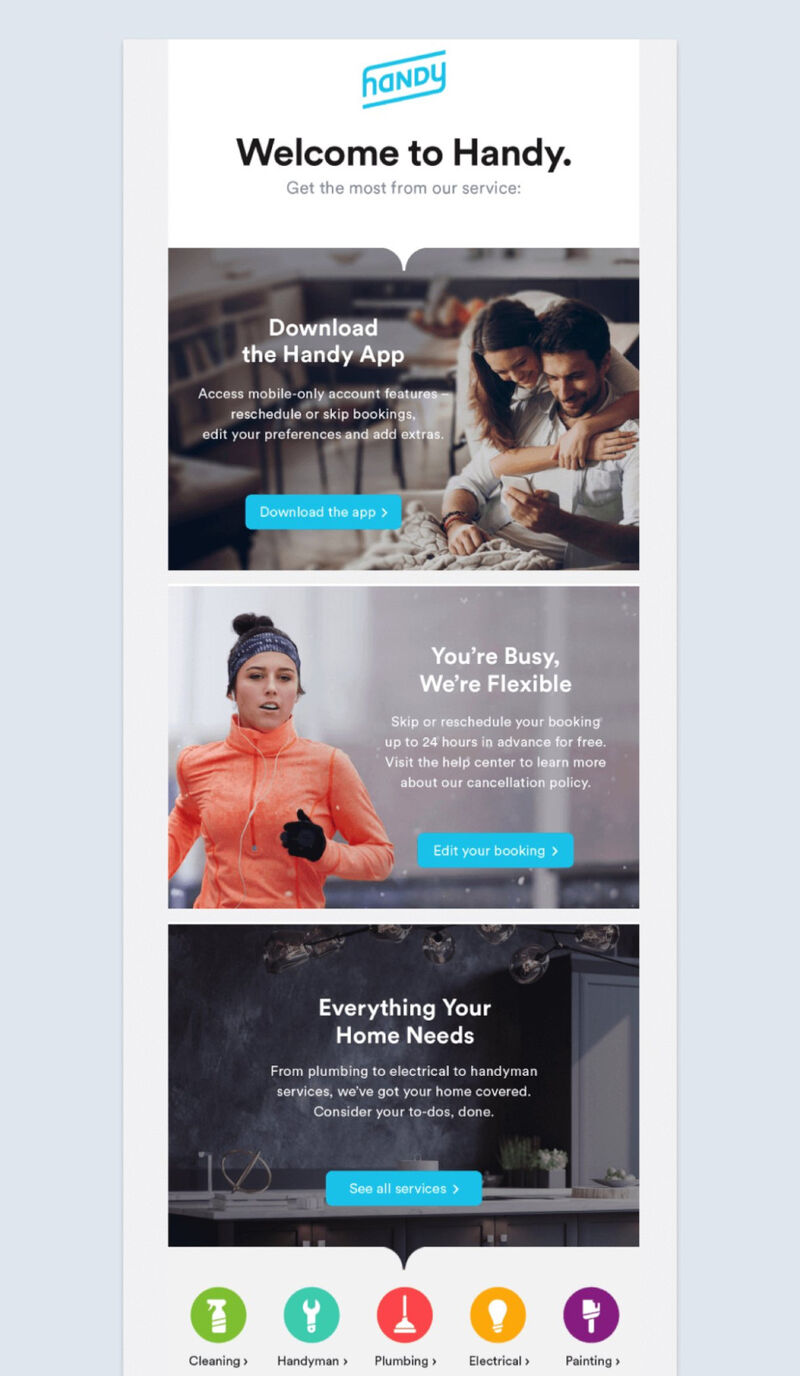
Have you ever sent out an email you were really happy with and then been disappointed with the results? You’re not alone.
Many business owners face this challenge with their email list marketing campaigns.
The success of your email campaigns depends on several factors, with list health, deliverability, segmentation, personalization, and design all having an impact on performance.
However, one of the main elements that influences the performance of your email, is your Call to Action (CTA).
Without a clear CTA, your readers might be confused about what to do after reading your email, which could lead to missed opportunities to achieve your marketing objectives.
So, whether you’re trying to boost sales, increase sign-ups, or drive traffic to your website, a well-crafted, compelling CTA is essential.
In this article, we’ll look at some email CTA best practices to help boost clicks from your emails and improve your overall email performance.
How can you craft an effective CTA for email marketing?
There isn’t a simple set of rules you can follow to craft a compelling CTA.
It’s more complex and nuanced than that.
The key to crafting a CTA that works in your emails is having a clear understanding of your audience and what motivates them.
Armed with this knowledge and the insight from the following tips – you’ll be able to craft effective email CTAs that drive real results for your business.
1. Be clear and concise
When it comes to email CTAs, clarity should be your top priority.
It’s important that your readers are able to understand what you want them to do at a glance, so it’s always best to avoid jargon or complex language that might confuse your audience.
It’s also best practice to keep your CTAs short and sweet. Long, wordy CTAs can appear cluttered and lose their persuasive power. A good rule of thumb is to keep your CTAs between 3 and 5 words.
To help make your CTAs stand out visually, consider using buttons as part of your HTML email as a way to capture attention and encourage click-throughs.
2. Use benefit driven, action-oriented language
The best performing CTAs often highlight the value your readers will get from clicking.
So, when you write your email CTA, try to think about the problem you’re solving for your audience or the value you’re providing—and include this in the wording.
For example, instead of a generic “Click here”, you could use “Save 20% now” or “Download your free guide”.
Both of these examples clearly communicate the benefit of taking action, giving your readers a compelling reason to click.
Using action verbs like “shop”, “download”, “register”, or “learn” in your CTA tells readers exactly what you want them to do and can help improve your click-through rate.
Another tip is to try and make your CTA a natural continuation of your email content.
For example, if your email has been introducing a new product launch, a CTA like “Be the first to buy” would align perfectly.
3. Take inspiration from examples of strong email CTAs
Sometimes, the best way to improve the performance of your email CTA is to take inspiration from tried and tested approaches.
So let’s take a look at some well-crafted email CTA examples::
- “Start your free trial”
This CTA is clear, concise, and benefit-driven. It tells the reader exactly what they’ll get, and reduces risk by mentioning the trial is free. - “Get 50% off – today only!”
This example creates urgency while clearly stating the benefit. It’s perfect for a flash sale or a limited-time offer. - “Join 10,000+ happy customers”
This CTA uses social proof to provide reassurance and encourage action. - “Claim your spot”
For event sign-ups or limited availability offers, this CTA creates a sense of exclusivity and urgency. - “See how it works”
This is great for complex products or services. It promises to provide more information without asking for a big commitment.
These examples illustrate how you might combine benefits, action-oriented language, and clarity in your CTAs.
Obviously, the best CTA for your group email will depend on your audience, your offer, and your objectives – so don’t be afraid to experiment with different approaches to see what works best for your business.
What’s the best email CTA position?
The ideal position for your CTA depends largely on the style and design of your email, as well as the objectives you want to achieve.
Let’s take a look at some common email CTA positions, and the circumstances in which they might be the most effective.
1. Above the fold
In email marketing, ’above the fold’ refers to the part of your email that’s visible as soon as it’s opened, without the reader needing to scroll down.
By placing your CTA above the fold, you’re able to immediately grab your reader’s attention and encourage immediate action.
But it’s worth bearing in mind that by placing your CTA ‘front and center’, your audience won’t necessarily have the opportunity to read your full email before being prompted to act.
This makes an above-the-fold email CTA ideal for ‘low consideration’ actions, which carry a low risk for subscribers and don’t require much thought or risk.
An above-the-fold CTA can also be effective if you’re reaching an audience who already knows and trusts your brand. These people may be more likely to act without needing much persuasion.
But if you’re reaching a ‘cold’ audience, or have a complex product or service offering that your audience needs to fully understand before acting – an above-the-fold email CTA might not be the most effective option.
This North Face email is a great above-the-fold email CTA example:

2. At the end of your email
For some email marketing campaigns, the most logical place for a CTA is at the bottom of the email.
For example, if you’re emailing people who aren’t familiar with your brand, your email may need to explain the benefits and features of your product or service before asking them to take action.
Another situation where you might place a CTA at the end of an email is if you have a ‘higher involvement’ product or service, that is quite expensive or carries a degree of risk for your subscribers.
In this scenario, you might need the body of the email to persuade and reassure readers before presenting your email CTA.
If you’re placing your CTA at the end of your email, make sure there’s a clear space between the CTA and the footer, to avoid accidental clicks on unsubscribe links or other footer content on mobile devices.
3. Within the body of your email
If your email is particularly long, you might consider including your email CTA at certain key points throughout the body of your message, to improve your click through rate.
This approach allows readers to easily click through as they are reading, without having to scroll up or navigate to the bottom of your email.
In some circumstances, you might include multiple CTAs in the body of your email.
While the general advice is to stick to a single CTA to avoid reader confusion, there are situations where multiple CTAs can be beneficial.
One common example is in e-commerce emails, where you might want to include a primary CTA above the fold (“Shop Our Sale!”) but then include secondary CTAs for specific categories, such as “Shop Menswear,” “Shop Womenswear,” and “Shop Accessories,” within the body of your email.
Another example is if your email is deliberately set up to serve multiple purposes, such as promoting a sale and encouraging newsletter sign-ups. In this situation, you might include separate email CTAs for each goal.
If you are including multiple CTAs in your email, it’s important not to overwhelm your readers.
It’s often good practice to implement a clear visual hierarchy so readers understand which action is most important. Your primary CTA should be bolder and more distinctive than your secondary CTAs.
A good example of an email with multiple CTAs is this one from Handy:

How should you measure the success of your CTAs?
If you’re going to take an accurate, data-driven approach to improving your email CTAs – you first need to understand how they are performing.
When reviewing the performance of your CTAs, focus on two main metrics: click-through rate (CTR) and conversion rate.
Let’s explore each of these in a bit more detail.
1. Click-through rate (CTR)
Click-through rate measures the percentage of email subscribers who click through to your website or landing page, after opening your email.
To calculate CTR, you divide the number of clicks by the number of emails opened. A high CTR indicates that your CTA is effectively capturing readers’ attention and driving action.
To help avoid any confusion if you’re doing wider research, it’s worth taking note of the difference between click-through rate (CTR) and email click rate.
Email click rate is the percentage of total subscribers who clicked on any link in your email, regardless of whether they opened it, whereas click-through rate (CTR) only considers subscribers who opened your email.
CTR is generally considered a better measure of email CTA performance because it isn’t influenced by unrelated variables like subject lines or sender reputation, which can affect open rates and skew the accuracy of your analysis.
2. Conversion rates
While CTR is an important metric for determining how well your CTA drives clicks to your landing page or website – conversion rate takes your analysis a step further.
This metric measures the percentage of people who clicked your CTA and completed your desired goal, such as making a purchase, signing up for a free trial, or downloading a white paper.
Conversion rate helps you understand not just how many people are clicking, but how effective your CTA is at driving your target actions.
It’s important to review both CTR and conversion rates alongside each other to ensure that your emails deliver the best possible user experience.
To help illustrate this, imagine you’re running a sale and your email CTA says, “Save up to 70% Now!”
You might get a high CTR on this CTA because it sounds like subscribers can get some amazing deals. But if only a handful of items actually have a 70% discount, you might see a low conversion rate.
If you are in a situation where you’re experiencing a high CTR, but a low conversion rate – it’s important to try and understand why.
Of course, not every subscriber that clicks through is going to convert, but it’s important to try and understand what could be causing confusion between the ‘promise’ of your email CTA and the experience on your landing page, to help avoid any disappointed customers and harm to your brand reputation.
It’s important to remember that the goal of your CTA isn’t just to get clicks, but to drive meaningful actions that support your business objectives.
So by using both CTR and conversion rate metrics to continually refine your approach, you’ll be in the best position to craft CTAs that resonate with your email list subscribers.
The final tip: For email CTA best practices, always be testing!
When it comes to email CTA best practices, perhaps the most important tip is to always be testing.
Your business and email list is unique, and what works for one business might not necessarily work for you.
Your best opportunity to find the most effective CTAs for your group email campaigns is to continuously experiment and refine through A/B tests, carefully measuring and analyzing your CTR and conversion rate.
A/B testing involves creating two versions of your email with different CTAs. You then send these two versions to different segments of your audience and compare the results – helping you make informed decisions about what works best for your audience.
As part of your testing strategy, it’s also worth considering that different segments of your email list might respond differently to email CTAs. For example, long-standing customers might respond better to a direct, sales-focused CTA, whereas new subscribers might respond better to softer messaging inviting them to browse or learn more.
If you’re going to be A/B testing by different customer segments, you’ll need an email platform with support for email list segmentation.
With Simplelists, you’re able to create unlimited lists for granular segmentation – allowing you to tailor your CTAs to specific groups within your email list, boosting your click-throughs and conversion rates.
If you’re curious about how Simplelists can help improve the performance of your email marketing campaigns, why not give the platform a try?
Sign up for a 1-month free trial, and experience how our easy-to-use platform can improve your email marketing efforts.
